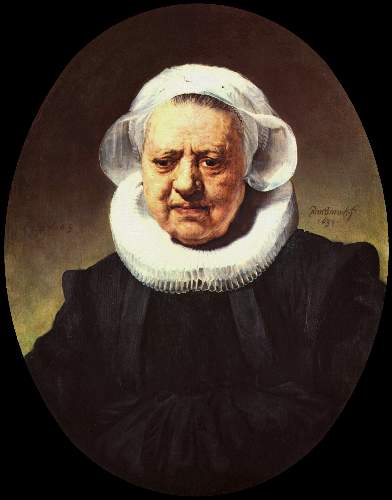Greetings,
This week we looked at the golden age of Dutch culture from around 1630-75, and how that related to the painting of Rembrandt. I can think of three instances where a naval based culture defeats a large empire, and then subsequently experienced a ‘golden age.’
1. Athens defeats Persia ca. 480 BC, which leads to Periclean Athens (Aeschylus, Euripides, etc.)
2. England defeats Spain in 1588, which leads to Elizabethan England (Shakespeare, Philip Sydney, etc.)
3. The Dutch defeat Spain ca. 1600, which brings about the Dutch Republic (Rembrandt)
I don’t know if this is coincidence or not. Can anyone think of other examples? We discussed before what needs to happen to create a ‘golden age’ in a culture, but I don’t know if having a solid navy needs to be part of that. Might we suggest that navies give people a broader perspective of the world, which allows for broader minds to create culture? Or, do navies lead to trade, which brings economic prosperity, which also seems to be an ingredient? I am not sure.
The Dutch defeat of Spain had military and economic causes. The Spanish had seemingly inexhaustible silver mines in the new world, but the Dutch had something new and more powerful: a stock market. Initially all of us might take the silver mine over the stock market, but why did the stock market beat the silver mine? We discussed this in class, with the caveat that I am not an economist:
- A silver mine would make one feel rich, but what does one do with the wealth? If everyone wins the lottery, no one in fact would win, because inflation would skyrocket as prices would inevitably rise. Loads of silver are in the end a wasting asset. In fact, prices rose some 400% in Spain over a period of a century.
- Besides this, how the money is used makes a difference. If it is used in a consumptive way, no new wealth is created. If you buy a series of fancy dinners, well and good, but the money is in your belly. If money was invested or used to create, it could create ‘new’ money, like a perpetual motion machine.
- Of course, having money create new wealth requires a society where innovation is possible, a society that allows for creativity and risk. When studying the Spanish Armada we saw how Spain lagged behind other European nations by maintaining a traditional social structure.
- Currency can be anything that has value. If you buy $10 worth of stock, the certificate = $10. But if the value of the company goes up, the value of what you own does as well. That $10 certificate can become $30 over time. You just made $20 — new wealth appears almost by magic. But this new wealth would ideally, at least, be tied toward actual production which would benefit society. So, ideally again, the value is not simply ‘on paper’ but has some tie to reality. Stock market bubbles burst when value becomes artificial, supported merely by belief or false delusion, and we discussed the first stock market boom/bust with the tulip craze.
The Dutch also invent the idea of the corporation. Though today many view the corporation as the epitome of entities estranged from “the people,” their original invention had a lot to do with the broad Republic created by the Dutch. The corporation not only allowed resources to be maximized and risks minimized, it allowed for the ordinary Joe to have a shot at wealth and status. No longer would money be in the hands of the aristocracy, or those granted a royal monopoly. It is a bit ironic to see what has happened to the image of corporations recently, but perhaps some of it is just. Perhaps corporations have grown so large as to become essentially faceless and detached from a human and understandable context. This, I think, is the root of some of modern unease some feel towards corporations today, but in the beginning the corporations was the ‘underdog,’ the People vs. the Established Powers. Still, I long for the day when a corporation is not the bad guy in a recently released movie.
On a related note, we had a good discussion about the morality of stock markets, and whether or not it is just for someone from the market. Should someone profit without work? Or is investing in company a kind of ‘work’ that benefits society? I’m happy to say that the students did very well with these heady concepts.
A few weeks ago we looked at the art of Rembrandt, the great Dutch master, and compared him to Carravaggio, contemporaries of each other. The Reformation emphasis of the sanctity of the everyday, of humanity itself, shines through in Rembrandt’s work. His portraits get inside people’s skin, bringing dignity and meaning to each individual.
Rembrandt painted many religious works, and his up and down life may have helped him not pull any punches with himself. In this famous work, many believe that Rembrandt puts himself in the work (bottom right), associating himself with those that killed Christ.
Though Carravaggio was a Catholic, his emphasis on everyday people amidst the drama of salvation shows the influence of the Reformation (and perhaps a resurgence of the Medieval mindset against the Renaissance) as well. He excelled in painting sinners. In my favorite work of his, “The Calling of St. Matthew,” all of his genius gets poured to Matthew’s surprised, yet hopeful eyes.
Carravaggio’s possessed a wild and unruly streak, one that led to him killing a man in a duel in a dispute over a woman. In perhaps his most dramatic work (and one of his last), he uses his own head as the model for Goliath.
How can one choose between two great masters? Yet the differences in their work reveal differences in their personalities and their respective cultures, something I wanted the students to consider.
Blessings,
Dave Mathwin






